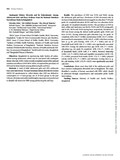| dc.contributor.author | Akter, Fahmida | |
| dc.contributor.author | Hossain, Md Mokbul | |
| dc.contributor.author | Shamim, Abu Ahmed | |
| dc.contributor.author | Hasan, Mehedi | |
| dc.contributor.author | Hanif, Abu Abdullah Mohammad | |
| dc.contributor.author | Hossaine, Moyazzam | |
| dc.contributor.author | Ullah, Mohammad Aman | |
| dc.contributor.author | Sarker, Samir Kanti | |
| dc.contributor.author | Rahman, S M Mustafizur | |
| dc.contributor.author | Mitra, Dipak Kumar | |
| dc.contributor.author | Haque, Md Emdadul | |
| dc.contributor.author | Mridha, Malay | |
| dc.date.accessioned | 2022-05-16T05:20:35Z | |
| dc.date.available | 2022-05-16T05:20:35Z | |
| dc.date.copyright | 2020 | |
| dc.date.issued | 2020-05-29 | |
| dc.identifier.citation | Akter, F., Hossain, M. M., Shamim, A. A., Hasan, M., Hanif, A. A. M., Hossaine, M., … Mridha, M. (2020). Inadequate dietary diversity and its determinants among adolescent girls and boys: Evidence from the national nutrition surveillance study in Bangladesh. Current Developments in Nutrition, 4(Supplement_2), 502. doi:https://doi.org/10.1093/cdn/nzaa046_002 | en_US |
| dc.identifier.uri | http://hdl.handle.net/10361/16607 | |
| dc.description | This article was published in Current Developments in Nutrition [Oxford University Press Copyright © Oxford University Press 2020.] and the definite version is available at: https://doi.org/10.1093/cdn/nzaa046_002 The Journal's website is at: https://academic.oup.com/cdn/article/4/Supplement_2/502/5845344 | en_US |
| dc.description.abstract | Objectives:
Bangladesh is experiencing triple burden of malnutrition among adolescents, which may be associated with inadequate dietary diversity (IDD). In the recently completed round of the national nutrition surveillance (NNS 2018–2019), we explored the prevalence of IDD and its determinants among adolescent girls and boys.
Methods
A total of 4808 adolescent girls and 4761 adolescent boys were interviewed. We used minimum dietary diversity for women (MDD-W) questionnaire to collect dietary data. IDD was defined as consumption of <5 food groups out of 10 food groups in the past 24 hours. Bivariate and multivariable logistic regression were performed to identify risk factors for IDD among adolescent girls and boys.
Results
The prevalence of IDD was 55.5% and 50.6% among the adolescent girls and boys. Prevalence of IDD decreased with an increase of educational attainment among girls (no education 77.8% and grade 10 completed education 49.2%) and boys (no education 68.2% and grade 10 completed education 44.2%). The prevalence of IDD in slum, urban and rural areas was 66.4%, 55.6%, and 51.9% among girls and 61.4%, 50.5% and 52.6% among boys, respectively. Prevalence of IDD was lowest among the richest wealth quintile (girls: 45.4% and boys: 43.1%). Among adolescent girls education (e.g., for grade 10 completed, AOR: 3.42, P = 0.002), marital status (AOR: 1.24, P = 0.046), processed food consumption (AOR: 1.66, P < 0.001), television viewing time (e. g. for ≤60 min/day, AOR: 1.37, P < 0.001), and sex of household head (AOR: 0.81, P = 0.003) were significantly associated with IDD. Among the adolescent boys age (AOR: 0.82, P = 0.024), education (e.g., for grade 10 completed, AOR: 2.36, P < 0.001), sex of household heads (AOR: 0.80, P = 0.002), livestock ownership (AOR: 1.22, P = 0.012), fruits and vegetable consumption (AOR: 1.38, P = 0.004), processed food intake (AOR: 1.74, P < 0.001), physical activity (AOR: 0.76, P = 0.001), and television viewing time (e. g. for ≤60 min/day, AOR: 1.19, P = 0.021) were significantly associated with IDD.
Conclusions
About more than half of the adolescent girls and boys consume inadequately diversified diet in Bangladesh. The study identified a number of factors associated with IDD, which should be addressed through comprehensive and sustainable public health interventions. | en_US |
| dc.language.iso | en_US | en_US |
| dc.publisher | Oxford Academic | en_US |
| dc.relation.uri | https://academic.oup.com/cdn/article/4/Supplement_2/502/5845344 | |
| dc.subject | Physical activity | en_US |
| dc.subject | Diet | en_US |
| dc.subject | Adolescent | en_US |
| dc.subject | Bangladesh | en_US |
| dc.subject | Surveillance | en_US |
| dc.subject | Medical | en_US |
| dc.subject | Farm Animals | en_US |
| dc.subject | Fast food | en_US |
| dc.title | Inadequate dietary diversity and Its determinants among adolescent girls and boys: Evidence from the National Nutrition surveillance study in Bangladesh | en_US |
| dc.type | Journal Article | en_US |
| dc.description.version | Published | |
| dc.contributor.department | Brac James P. Grant School of Public Health | |
| dc.identifier.doi | https://doi.org/10.1093/cdn/nzaa046_002 | |
| dc.relation.journal | Current Developments in Nutrition | |

